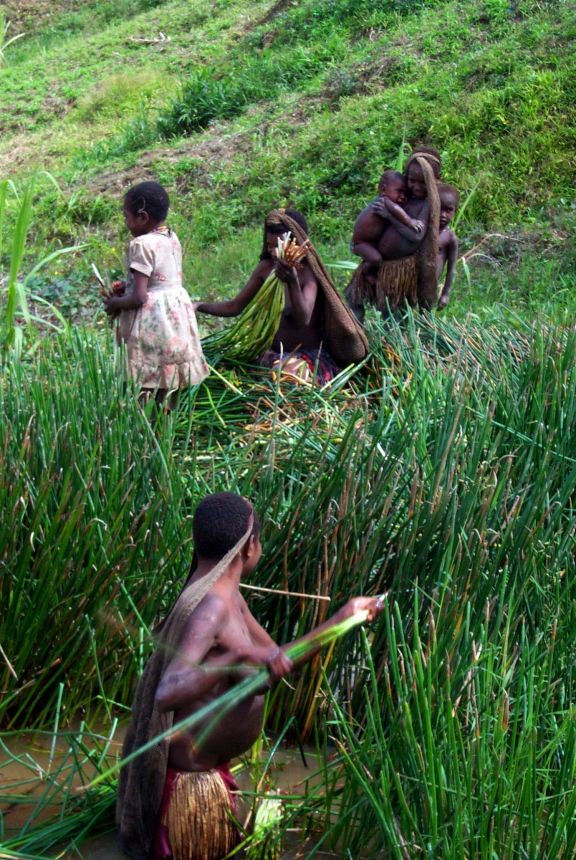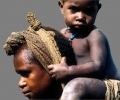Arithmetic in the Clinic
“What is the name of your first child?”
“Yosef.”
“Is he alive?”
“Dead.”
“Number two?”
“Markus.”
“Alive?”
“He is outside.”
“Who is next?”
“No name yet.”
“Where is it?”
“Outside.”
That is the typical process to get the answer to the question ‘how many children do you have?’ from a pregnant Asmat woman. If we asked that question, she would not be able to answer, unless she only had two children. They only know ‘one’, ‘two’, and ‘many’.
The other reason why they could not answer the question was the extremely high infant mortality rate. Pater Ton had an excellent registration of his parishes; he registered all the births and deaths by village. He knew that the population of his parishes was stable over many years: the number of survived babies to adulthood equaled to the number of the dead adults.
The Asmat and many other tribes in Papua did not name their babies before one year old. It made sense because in Asmat region, on average, only 2 – 3 from 10 babies of one mother had delivered became adults. The rest were killed by various tropical diseases, especially malaria and pneumonia.





